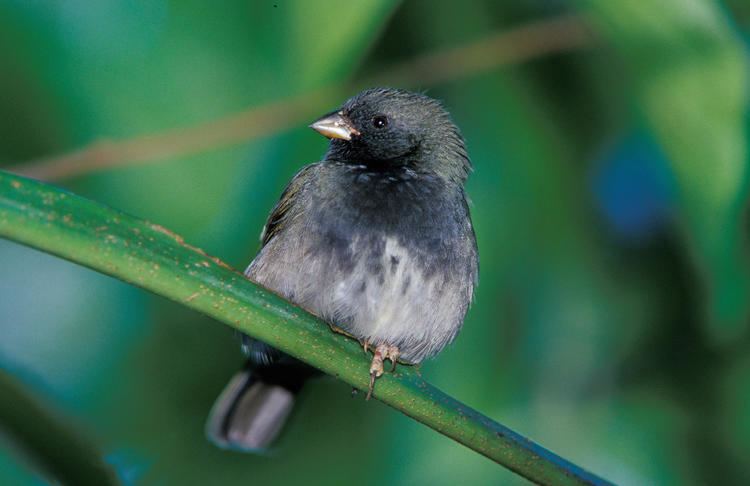Order Passeriformes Genus Tiaris Higher classification Tiaris | Phylum Chordata Family Thraupidae Scientific name Tiaris bicolor Rank Species | |
 | ||
Similar Bird, Tiaris, Lesser Antillean bullfinch, Greater Antillean bullfinch, Yellow‑faced grassquit | ||
Black faced grassquit semillero pechinegro tiaris bicolor
The black-faced grassquit (Tiaris bicolor) is a small bird formerly placed with the Emberizidae. It is now recognized as a tanager closely related to Darwins finches. It breeds in the West Indies except Cuba, on Tobago but not Trinidad, and along the northern coasts of Colombia and Venezuela.

This is a common bird in long grass or scrub in open or semi-open areas, including roadsides and ricefields. It makes a domed grass nest, lined with finer grasses, and placed low in a bush or on a bank. The typical clutch is two or three whitish eggs blotched with reddish brown. Both sexes build the nest and feed the young.

Adult black-faced grassquits are 10.2 cm long and weigh 10.5 g. They have a short conical black bill with an obvious curve to the culmen. The male is olive green above, paler grey-olive below, and has a black head and breast. Female and immature birds have dull olive-grey upperparts and head, and paler grey underparts becoming whiter on the belly.

Males on the South American mainland have more extensively black underparts, shading to a grey belly.
The black-faced grassquit feeds mainly on seeds, especially of grasses and weeds. It is often found in small groups, but is solitary at evening roosts.

The male has a display flight in which he flies for short distances, vibrating his wings and giving a buzzing dik-zeezeezee call.
